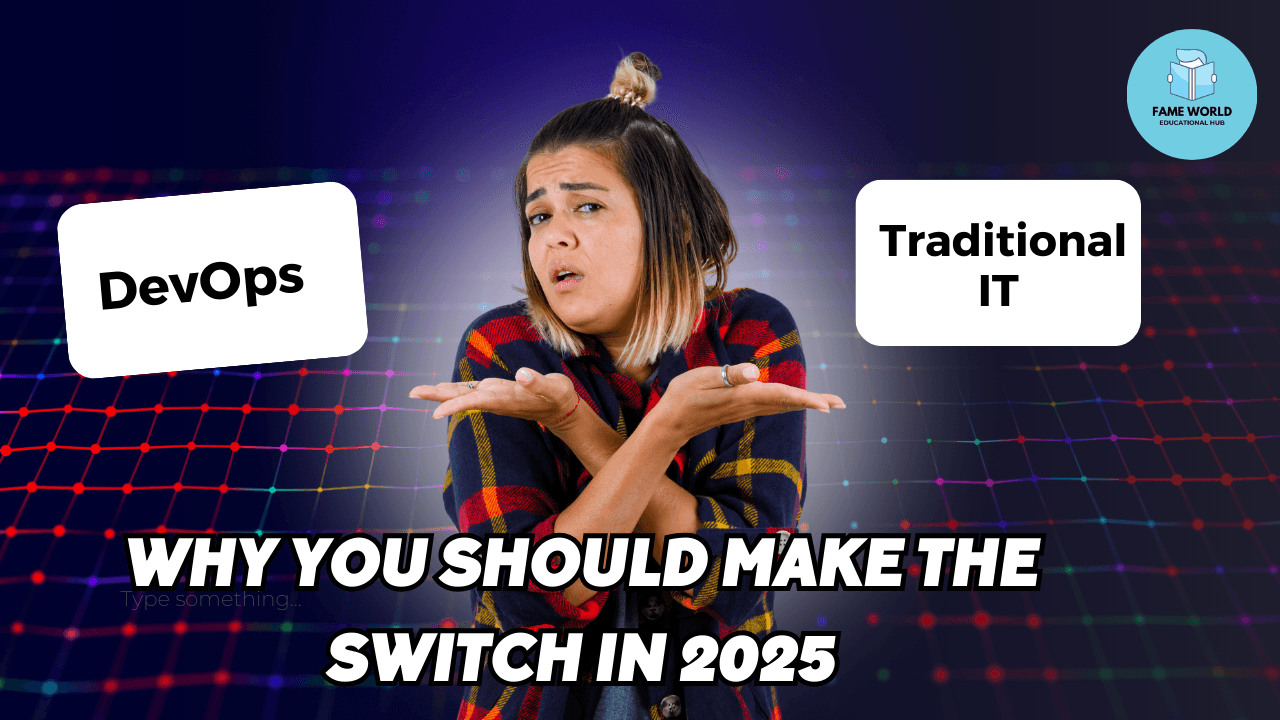The IT landscape has been evolving rapidly, and DevOps has emerged as a game-changer. While traditional IT methods have served businesses for decades, they’re often slow, siloed, and unable to keep up with the fast-paced demands of modern software development. DevOps bridges these gaps by fostering collaboration, enhancing agility, and streamlining processes. As we enter 2025, the case for adopting DevOps has never been stronger.
In this blog, we’ll dive into the core differences between DevOps and traditional IT, explore the benefits of DevOps, and provide actionable insights for organizations considering the switch.
Understanding the Basics
Traditional IT Approach
Traditional IT is characterized by distinct silos: development, operations, quality assurance (QA), and management. Each team operates independently, leading to communication gaps and inefficiencies.
Key Features:
- Siloed Teams: Development and operations rarely collaborate directly.
- Linear Processes: Sequential handoffs, such as from development to QA and then to operations.
- Slow Deployment: Long cycles between software development, testing, and deployment.
- Reactive Management: Focused on troubleshooting rather than proactive optimization.
DevOps Approach
DevOps integrates development (Dev) and operations (Ops) into a cohesive unit, emphasizing collaboration, automation, and continuous improvement.
Key Features:
- Integrated Teams: Developers, QA, and operations work together seamlessly.
- Agile Methodologies: Iterative processes that adapt quickly to changes.
- Continuous Delivery (CD): Automates code integration, testing, and deployment.
- Proactive Monitoring: Focus on performance optimization and issue prevention.
Key Differences: DevOps vs. Traditional IT
| Aspect | Traditional IT | DevOps |
| Team Structure | Siloed | Integrated |
| Speed | Slow deployment cycles | Rapid, continuous delivery |
| Communication | Limited and formal | Open and collaborative |
| Automation | Minimal | Extensive use of CI/CD and other tools |
| Feedback Loops | Delayed | Continuous |
| Focus | Stability and control | Speed, agility, and innovation |
Why Make the Switch in 2025?
The traditional IT model struggles to meet the demands of the modern digital world. Here are some compelling reasons to adopt DevOps in 2025:
1. Faster Time to Market
In a competitive landscape, speed is a key differentiator. DevOps enables rapid development and deployment cycles through:
- Continuous Integration/Continuous Delivery (CI/CD) pipelines.
- Automated testing, reducing human errors and delays.
2. Improved Collaboration
Breaking down silos between teams fosters a culture of trust and collaboration. This enhances:
- Communication and transparency.
- Shared accountability for both success and failure.
3. Enhanced Customer Satisfaction
By enabling frequent updates and bug fixes, DevOps ensures:
- Faster response to customer needs.
- Consistent delivery of high-quality software.
4. Scalability and Flexibility
DevOps supports microservices architecture and cloud-native applications, enabling businesses to:
- Scale applications effortlessly.
- Quickly adapt to market changes.
5. Cost Efficiency
Automation and efficient resource utilization reduce operational costs:
- Fewer outages due to proactive monitoring.
- Streamlined workflows minimizing waste.
6. Focus on Innovation
With routine tasks automated, teams can focus on:
- Developing innovative features.
- Exploring new technologies like AI and machine learning.
Challenges of Adopting DevOps
While the benefits are significant, the transition to DevOps isn’t without challenges:
- Cultural Resistance: Shifting mindsets from a siloed to a collaborative approach.
- Skill Gap: Upskilling employees to adopt new tools and methodologies.
- Tool Overload: Selecting the right tools from the vast DevOps ecosystem.
- Initial Costs: Investing in training and infrastructure.
Solution: Start small. Adopt DevOps incrementally, focusing on a single project or team before scaling up.
Steps to Transition from Traditional IT to DevOps
1. Assess Your Current State
- Identify bottlenecks in your current processes.
- Understand the limitations of your existing tools and workflows.
2. Build a Collaborative Culture
- Encourage open communication between teams.
- Foster a mindset of shared responsibility.
3. Invest in the Right Tools
- Popular tools include:
- Jenkins, GitLab: For CI/CD.
- Docker, Kubernetes: For containerization and orchestration.
- Prometheus, Grafana: For monitoring and analytics.
4. Start with a Pilot Project
- Choose a small, low-risk project to implement DevOps practices.
- Measure the outcomes and refine your approach.
5. Upskill Your Team
- Provide training in DevOps tools and methodologies.
- Promote certifications for specialized skills (e.g., AWS Certified DevOps Engineer).
6. Automate Everything
- Automate repetitive tasks like testing, deployment, and monitoring.
- Leverage infrastructure as code (IaC) for consistent and scalable setups.
7. Measure and Iterate
- Continuously track key performance indicators (KPIs) such as:
- Deployment frequency.
- Lead time for changes.
- Mean time to recovery (MTTR).
Real-World Success Stories
Netflix
Netflix uses DevOps to enable daily deployments. By automating processes and fostering collaboration, they deliver a seamless streaming experience to millions of users globally.
Amazon
Amazon leverages DevOps to deploy updates every 11.7 seconds on average, maintaining high reliability and customer satisfaction.
Conclusion
As businesses strive to stay competitive in an increasingly digital world, DevOps is no longer optional—it’s essential. The shift from traditional IT to DevOps offers unmatched agility, efficiency, and innovation, enabling organizations to meet the demands of 2025 and beyond.
By addressing challenges head-on and adopting a step-by-step approach, your organization can unlock the full potential of DevOps. The time to make the switch is now—don’t let traditional IT hold you back!
Your Turn!
Are you considering transitioning to DevOps? Share your thoughts, questions, or experiences in the comments below. Let’s spark a conversation about the future of IT!
Additional learning resources:
PYTHON Q&A SERIES – Link
IOT TUTORIAL SERIES – Link
PYTHON PROGRAMMING TUTORIAL SERIES – Link
CAREER TIPS – Link
CLOUD COMPUTING – Link
MERN FULL STACK WEB DEVELOPMENT – Link
DJANGO SERIES – Link
DIGITAL MARKETING – Link
C LANGUAGE – Link
CODING INTERVIEW PREPARATION – Link
NEW AI TOOLS – Link
PYTHONISTA FOR PYTHON LOVERS – Link
ARTIFICIAL INTELLIGENCE – Link
MACHINE LEARNING USING PYTHON – Link
DBMS – Link
PYTHON PROGRAMMING QUIZ SERIES – Link
BLOCKCHAIN TECHNOLOGY TUTORIAL SERIES – Link
NETWORKING QUIZ SERIES – Link
CYBER SECURITY Q&A SERIES – Link
PROGRAMMING RELATED STUFF – Link



